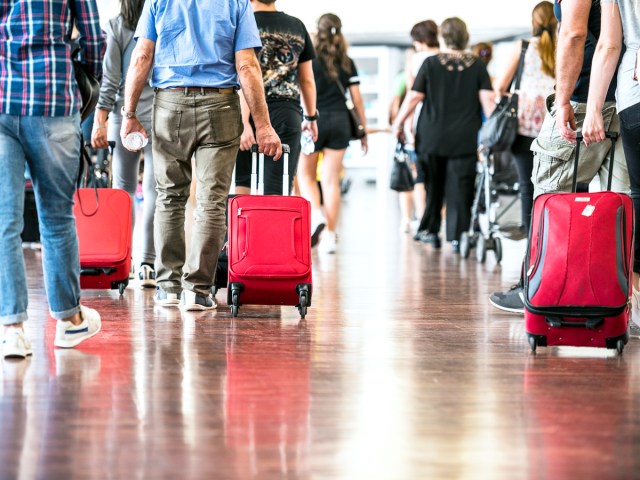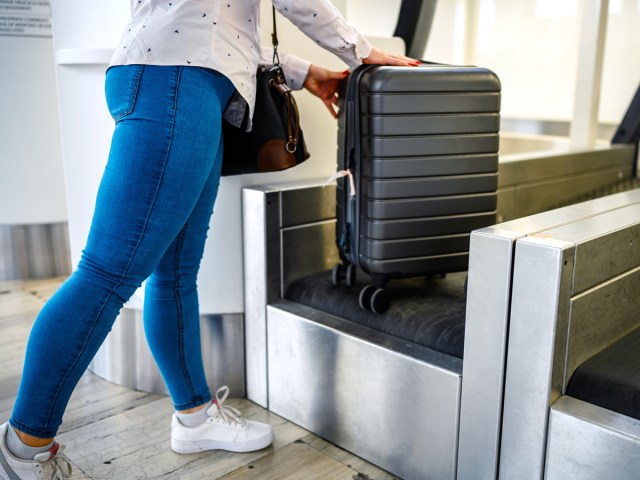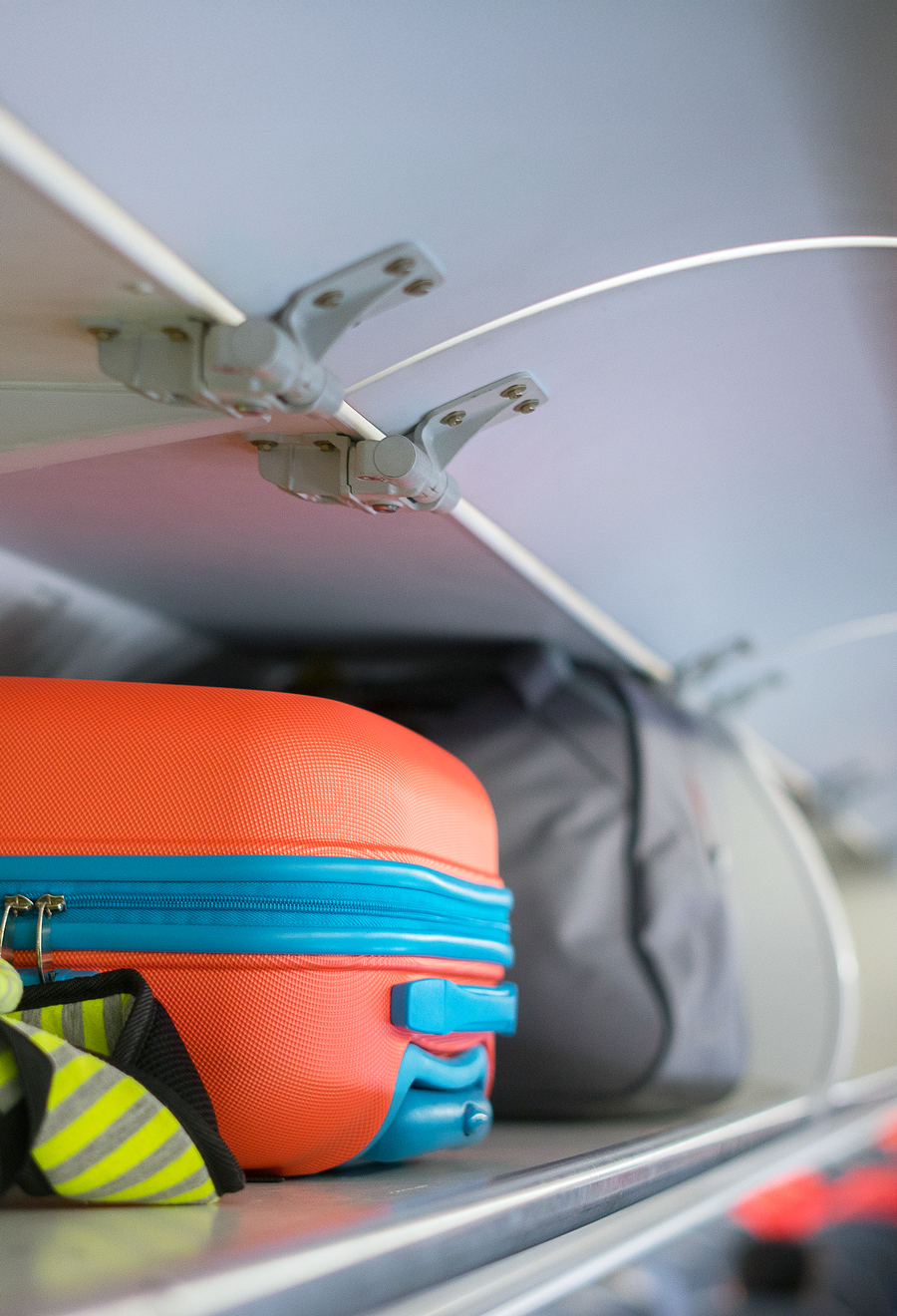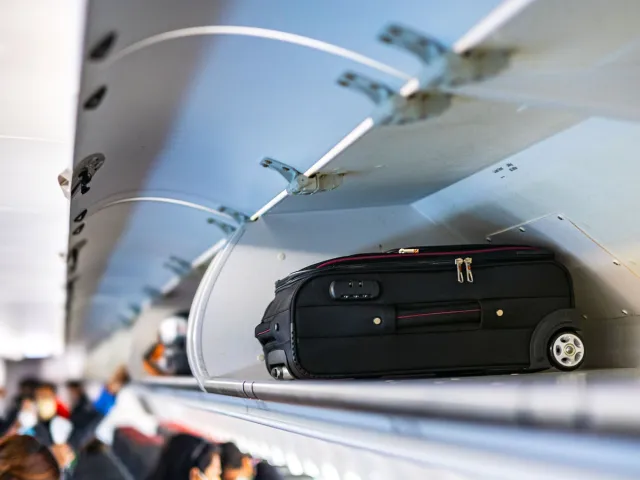If you’ve ever weighed your checked baggage before leaving for the airport, you’ve surely wondered: What actually happens if it’s over 50 pounds? Well, you’ll pay a fee, of course — anywhere from $30 to $200, depending on the airline and just how far over the limit you are. But does it actually have any effect on the plane? The cynical answer would be no, it doesn’t; if it did, the airline wouldn’t allow you to bring it aboard rather than simply charge you extra. However, there’s a longer, more accurate answer to this question — find out everything you wanted to know about airline baggage limits below.
Striking the Right Balance

The combined weight of passengers, luggage, and everything else required to operate a commercial aircraft does indeed have a significant effect on the plane’s ability to safely ferry you to your final destination. Not only does baggage have to be within safe limits for crew to manually handle it, but the aircraft’s maximum takeoff weight (MTOW) also comes into play. This is the heaviest the aircraft can weigh for it to safely take off, and a variety of factors are calculated — including passenger baggage.
And it isn’t just weight: Balance plays a huge role as well, hence why you might be moved to a different part of the plane in order to achieve the most efficient center of gravity. If a plane is improperly balanced, it can even tip over — which is what happened to a JetBlue Airbus A321 in late 2023 as passengers were disembarking at New York’s JFK Airport.
The Federal Aviation Administration’s own Weight and Balance Handbook, puts the importance of balance in plain language: “Because of abnormal stresses placed upon the structure of an improperly loaded aircraft, or because of changed flying characteristics of the aircraft, loss of life and destruction of valuable equipment may result.”
The National Transportation Safety Board (NTSB) attributed 136 general aviation (GA) accidents to improper preflight weight and balance calculations, a third of which resulted in fatalities. In other words, it’s considerably more important than putting your phone in airplane mode before takeoff.
Read the Fine Print

Loading passengers, fuel, and luggage on a commercial aircraft is a bit like Tetris, albeit with more math. Because weighing every single passenger and carry-on would be intrusive, time-consuming, and tedious, airlines estimate and average them. They have different methodologies for doing so, with seasonal factors like winter clothing coming into effect, and it’s a crucial part of getting a plane off the ground.
That isn’t to say that airlines couldn’t individually weigh each passenger and bag if they felt it was necessary, however. In 2024, Finnair began a voluntary weigh-in process to have more accurate calculations, a move that some passengers decried as “appalling” and “humiliating.”
However, obtaining as accurate measurements as possible is necessary when it comes to calculating everything from how much fuel will be required for a given route, which emergency landing sites would be viable in case of an emergency, and how far a plane will actually be able to travel. The FAA stated in a 2021 memo that “regardless of the sampling method used, an operator has the option of surveying each passenger and bag aboard the aircraft and should give a passenger the right to decline to participate in any passenger or bag weight survey.”
Interestingly, in 2022, the European Union Aviation Safety Agency (EASA) conducted a voluntary weigh-in survey of passengers and their baggage at major European airports. The agency updated its passenger weight data after it found that the average figures had increased from the previous survey in 2009.
X Factors

Individual airlines also have different terms and conditions when it comes to weight restrictions. Delta’s contract of carriage allows operators to refuse compensation to passengers denied boarding “due to weight/balance restrictions when required by operational or safety reasons.” United and American have similar language in their own contracts of carriage.
It isn’t just the size of the plane that matters, but also the length of the runway: Shorter ones necessitate lighter planes; otherwise they wouldn’t be able to reach a necessary takeoff speed. High altitudes, temperatures, and wind speeds also come into account.
None of these factors should cause passengers stress, however. Airlines and aviation safety agencies have clearly put a lot of thought into the process, but still, it may be worth keeping in mind next time you weigh your bag before a flight.
More from our network
Daily Passport is part of Inbox Studio, which publishes content that uplifts, informs, and inspires.























